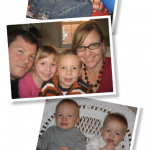ACR CONVERGENCE 2021—Many of the effects of childhood-onset systemic lupus erythematosus (cSLE) and vasculitis carry into adulthood and present adult rheumatologists with key differences in managing these patients after their transition from a pediatric to an adult provider.
“The young adult with childhood-onset lupus is similar in many ways to adults with lupus, but there are important differences, and it is important to be aware of those,” said Stacy Ardoin, MD, professor of pediatric and adult rheumatology at Nationwide Children’s Hospital, Ohio State University, Columbus. During ACR Convergence 2021, she opened a session titled Not Just Little Adults: What Rheumatologists Should Know About Childhood-Onset SLE & Vasculitis by discussing these differences and management issues in patients with cSLE.
Paul Brogan, MD, professor of vasculitis and section head for infection, inflammation and rheumatology, University College London, Institute of Child Health at Great Ormond Street Hospital, spoke about the differences in vasculitis in children and adults. He dispelled myths for adult rheumatologists and provided evidence to support the treatment of children with vasculitis transitioning into adulthood.
cSLE
The pathogenic mechanism and patterns of disease involvement in childhood-onset SLE and adults are the same, as is the treatment approach. But important differences exist in childhood-onset disease, which is marked by more organs affected, more severe disease (i.e., higher disease activity), faster damage accrual, higher mortality, higher risk of complications due to more severe disease and different pharmacokinetics.
cSLE also has a greater genetic component, with these children at greater risk of developing the rarer, monogenic form of disease. Dr. Ardoin explained when adult rheumatologists should suspect a monogenic form of SLE and how to pursue an evaluation to make the diagnosis. Clues, she said, include onset in a child 6 years or younger with a history of immunodeficiency, family history of immunodeficiency, as well as involvement of the skin, kidneys and central nervous system.

Dr. Ardoin
Walking attendees through treatment strategies for cSLE, Dr. Ardoin emphasized that treatment is similar to the treatment of adults in that it’s tailored to organ involvement—or to mild to severe disease activity. However, for children, the dosage of the same drugs given to adults needs to be based on weight and body surface to avoid either underdosing or overdosing these patients.
“I’ve often found rheumatologists are concerned about giving doses that may approximate adult disease and tend to use a dose lower than is needed by the child,” she said, adding that this can result in undertreating their disease.
Dr. Ardoin talked briefly about the only U.S. Food & Drug Administration-approved, targeted therapy for pediatric SLE, belimumab, which is currently available only in an intravenous option for children. But she suspects, it will soon be available for subcutaneous administration, pending evaluation of forthcoming trial data.
A key area Dr. Ardoin focused on is the long-term complications many children with cSLE will carry into adulthood, such as obesity, atherosclerosis, reproductive concerns and osteoporosis, and the need for recognition by adult rheumatologists of the lifelong impact of these complications.
She cited evidence showing, for example, the much higher incidence of atherosclerosis in children with cSLE than other children. “I would say to an adult rheumatologist, when taking care of an adolescent with lupus, be cognizant of these kinds of complications and don’t wait to address them,” she said.
Vasculitis
In talking about childhood vasculitis, Dr. Brogan emphasized important distinctions in the differential diagnosis of pediatric vasculitis. He dispelled a common myth that classification criteria can be used to help diagnose individual children with small vessel vasculitis.
“Rheumatologists have been misusing classification criteria for diagnosis for decades,” he said, citing an editorial written by Gene Hunder, MD, on the use and misuse of classification and diagnostic criteria for complex diseases.1 Diagnosis based on clinical features is much simpler, he noted.

Dr. Brogan
Another myth Dr. Brogan dispelled is that IgA vasculitis is the only small vessel vasculitis in children. Anti-neutrophil cytoplasmic antibody (ANCA) vasculitides are also seen in children, including granulomatosis with polyangiitis (GPA), microscopic polyangiitis (MPA) and eosinophilic granulomatosis with polyangiitis (EGPA). For each of these diseases, the differential diagnosis is based on clinical features and the presence of ANCA, he emphasized.
Other types of vasculitis seen in children are Kawasaki disease and polyarteritis nodosa (PAN)—both medium vessel vasculitides. Dr. Brogan emphasized that treatment for Kawasaki disease should target zero fever and normal C-reactive protein as measures of treatment success. He also said the rate of coronary artery aneurysms is much higher than typically thought in patients with these types of vasculitis, despite intravenous immunoglobulin (IVIG) treatment.
Dr. Brogan described evidence from the first pediatric trial, MYPAN, for the treatment of PAN. The trial showed the noninferiority of mycophenolate mofetil (MMF) vs. cyclophosphamide for remission reduction, indicating that MMF plus glucocorticoids can be used for first-line remission induction, reserving cyclophosphamide for patients with refractory disease.2
Mary Beth Nierengarten is a freelance medical journalist based in Minneapolis.
References
- Hunder GG. The use and misuse of classification and diagnostic criteria for complex diseases. Ann Intern Med. 1998 Sep 1;129(5):417–418 Annals of Internal Medicine 1998.
- Brogan PA, Arch B, Hickey H, et al. Mycophenolate mofetil versus cyclophosphamide for remission induction in childhood polyarteritis nodosa: An open-label, randomized, bayesian noninferiority trial. Arthritis Rheumatol. 2021 Sep;73(9):1673–1682.


